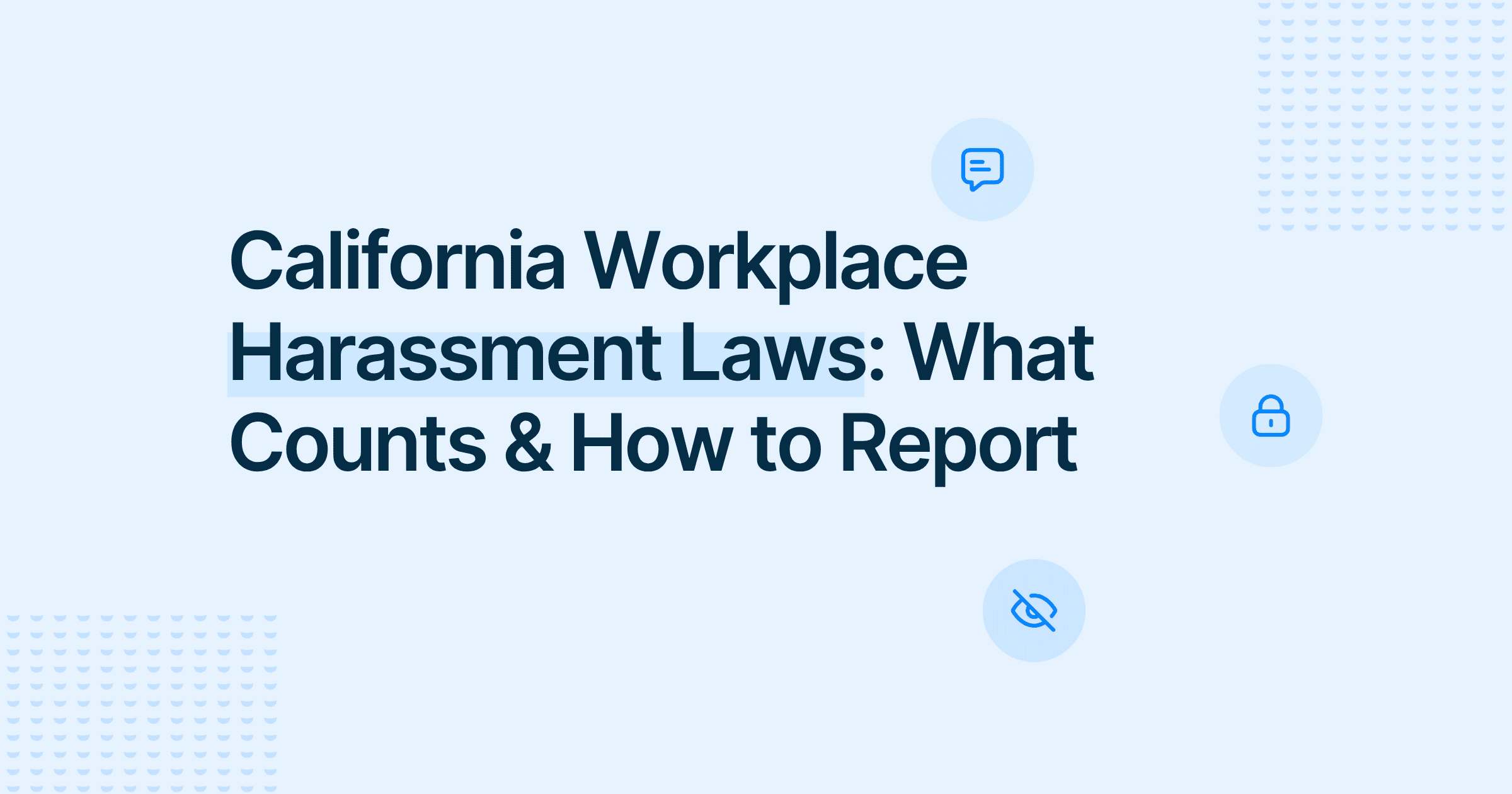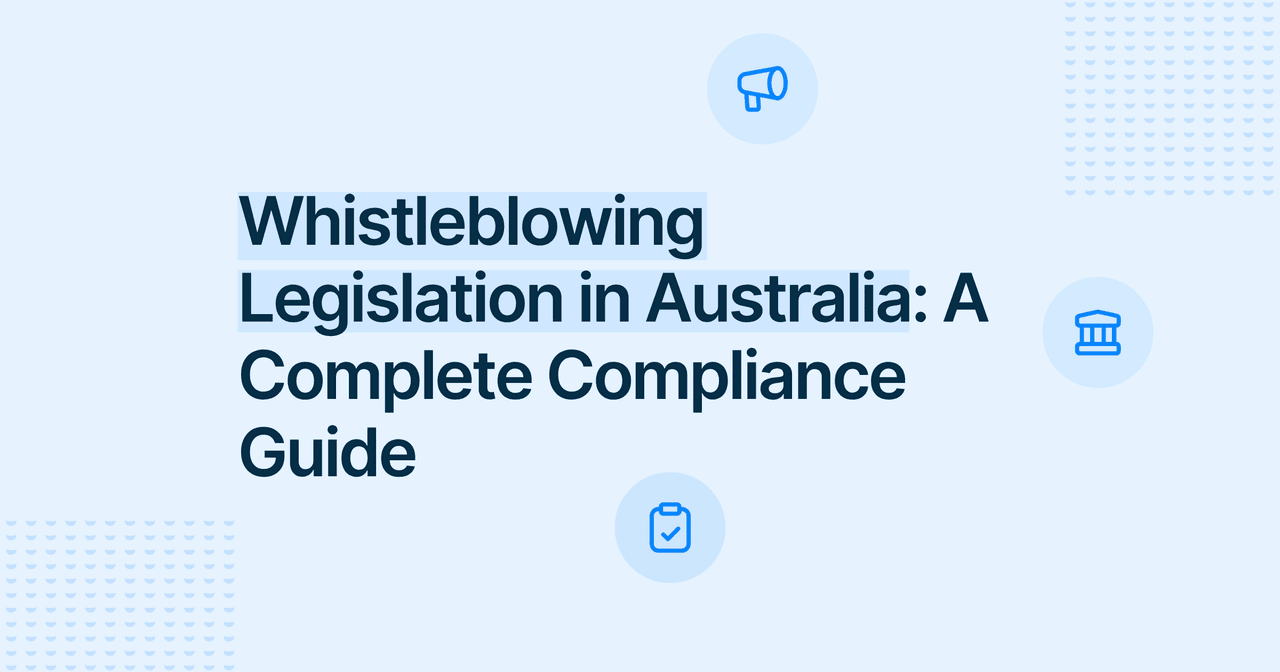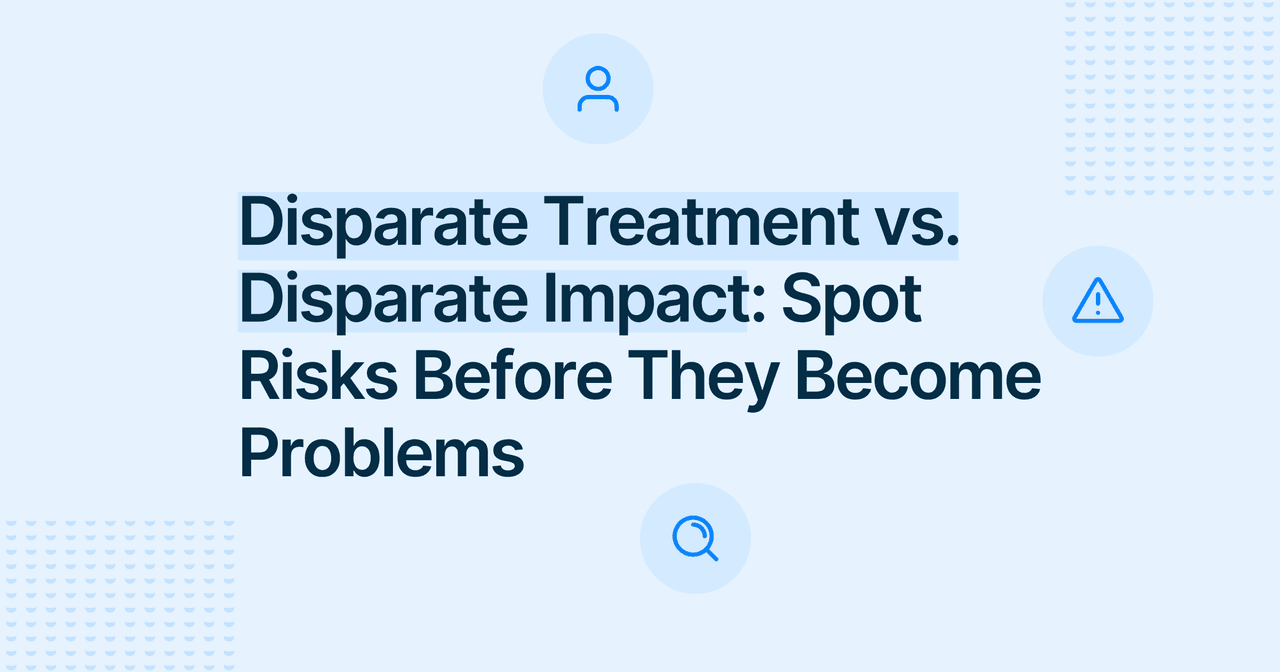



Discover the benefits of a transparent organization!
Try our free platform and strengthen the culture of openness in your team.
Legal & Compliance

Yeva Bartkiv
Copywriter
Published
2025-06-17
Reading time
7 min


Table of contents
Subscribe to our newsletter
In the California workplace, protecting employees from harassment isn’t optional-it’s mandated by some of the strictest and most comprehensive harassment laws in the country. Governed primarily by the California Fair Employment and Housing Act (FEHA), these rules place a legal obligation on employers to prevent, investigate, and address all forms of harassment, including sexual harassment, psychological abuse, and discrimination based on protected characteristics.

Whether you’re in human resources, a small business owner, a compliance officer, or an employee seeking clarity, understanding these California work harassment laws is critical to protecting employee rights and ensuring legal compliance.
Harassment in the workplace is defined under both federal law (notably Title VII of the Civil Rights Act) and California law (through FEHA, codified in California Government Code §12900 and beyond). While federal statutes apply broadly, California’s regulations go deeper, providing more expansive protections.

The Fair Employment and Housing Act outlaws harassment based on these protected characteristics:
These state laws ensure that harassment tied to any of these categories is unlawful-even if the employer did not intend harm.
Harassment in the workplace can take many shapes and forms, often manifesting in ways that are subtle, persistent, and difficult to document. Understanding the specific behaviors and categories that qualify as harassment is crucial not just for legal compliance, but also for fostering a respectful and inclusive work environment. California law recognizes a wide spectrum of inappropriate and unlawful conduct, and being able to identify these behaviors is the first step in prevention and resolution.
California recognizes several types of harassment:
Includes slurs, epithets, offensive jokes, derogatory comments, or verbal abuse based on a protected trait.
Unwanted touching, blocking movement, and other physical harassment that interferes with someone’s dignity or safety.
Offensive posters, texts, memes, or gestures displayed in the workplace.
Common in psychological harassment at work California cases, this includes isolation, gaslighting, or constant criticism intended to demean a person, especially when tied to their identity.
One of the most widely reported violations under employment law, sexual harassment includes sexual advances, sexual favors, or other sexually charged conduct. It falls into two primary categories:
California’s laws differ from federal employment discrimination statutes in several key ways:
A workplace harassment claim must meet specific conditions:

Harassing behavior doesn’t need to be physical. Verbal and psychological tactics-like making derogatory comments about someone’s sexual orientation or implying demotion unless sexual favors are granted-also count.
Example Harassment Case: A female employee in Los Angeles is repeatedly told by her manager that she needs to "smile more for male clients" and is passed over for promotions unless she attends social outings. This may qualify as both quid pro quo and hostile work environment harassment.
California employers are required by harassment laws to create and maintain a robust harassment policy. It must include:
If internal channels fail or feel unsafe, employees can file with:
Deadlines:
To comply with California harassment laws, your company’s anti-harassment policy should:
Employers must take reasonable steps to:
Non-compliance can lead to fines, reputational harm, or legal action, including lawsuits demanding punitive damages.
Meeting California's strict anti-harassment laws isn't just about compliance - it's about creating a culture where employees feel empowered to speak up. One of the most effective ways to foster this environment is by implementing a secure, anonymous, and easy-to-use reporting system. FaceUp provides exactly that.
FaceUp's whistleblowing and reporting platform is designed to help employers fulfill their responsibilities under the California Fair Employment and Housing Act (FEHA), the Civil Rights Act, and other state and federal workplace harassment laws. It supports organizations in taking the reasonable steps required to prevent, address, report, and document all forms of harassment.
With FaceUp, organizations can:
FaceUp not only helps organizations meet legal requirements - it plays a critical role in enhancing workplace culture. By removing traditional barriers to reporting, such as fear of exposure or mistrust in HR channels, the platform encourages early intervention and protects employee mental health and overall well-being. The ability to report anonymously can be especially valuable in cases involving power imbalances, psychological harassment, or culturally sensitive issues.
FaceUp is trusted by organizations in over 60 countries across multiple sectors. It is GDPR compliant and ISO 27001 certified, ensuring high standards of data protection. The platform can be easily implemented in companies of any size, whether you're a small business in Los Angeles or part of a global enterprise.
By integrating FaceUp into your compliance framework, you’re taking a meaningful step toward a safer, more transparent, and respectful California workplace.
If your harassment complaint is unresolved or dismissed, you may want to consult employment lawyers to determine the viability of a harassment case in civil court. Legal professionals can help:
Many firms in Los Angeles and across California offer a free consultation to assess your claim.
Whether you're preventing harassment or navigating a work harassment California case, understanding California work harassment laws is vital. Knowing what qualifies under the California Fair Employment and Housing Act, how to report harassment, and how to implement a comprehensive harassment policy can protect your business-and more importantly, your people.
To build a safer, more inclusive workplace:
Book a demo with FaceUp to explore anonymous, secure, and compliant harassment reporting for your team.




Try our free platform and strengthen the culture of openness in your team.
Keep Reading

Alaa El-Shaarawi2025-10-319 min
Legal & Compliance

Alaa El-Shaarawi2025-10-206 min
Whistleblowing

Alaa El-Shaarawi2025-10-158 min
Legal & Compliance

Alaa El-Shaarawi2025-10-135 min
Legal & Compliance